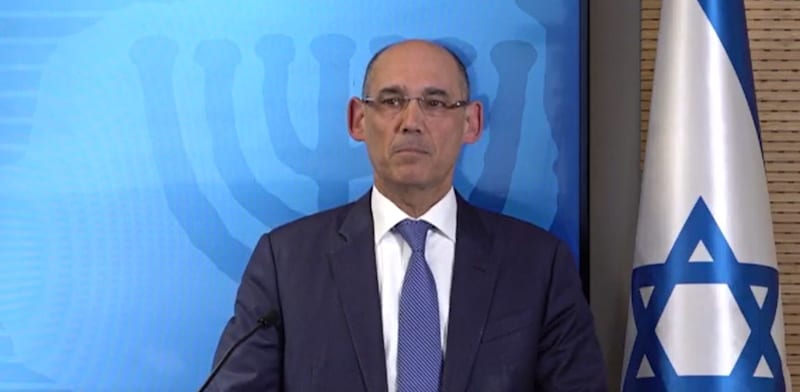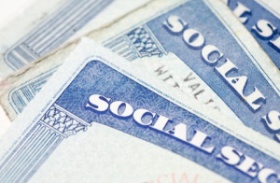Yves here. With the too frequent and clearly hyperbolic attacks on New York City’s now mayor-elect Zohran Mamdani as sure to usher in Communism, this look at Russia’s actual revolutions seemed timely. Most of you likely know this history, but some might learn or be reminded that Lenin and his fellow Bolsheviks were socialists, as in concerned with the treatment of industrial labor, and found it necessary to implement land redistribution to peasants to hang on to power.
There are many in-depth histories of this period, including ones that have the space to provide more coverage of how the Great War and economic pressures played into this great upheaval. I hope knowledgeable readers will add details in comments.
By Dr. Vladislav B. Sotirovic, Ex-University Professor, Research Fellow at Centre for Geostrategic Studies, Belgrade, Serbia
Russia in the Great War
Both revolutions of 1917 in Russia, the so-called February and the so-called October, took place during World War I (the Great War) when Russia fought against the Central Powers and their allies as a full member of the Entente powers together with France and Great Britain and their allies (i.e. associated members), including the Kingdom of Serbia, for which Tsarist Russia selflessly and self-sacrificing entered the war, even though in the summer of 1914 it was not sufficiently prepared for war against the Central Powers, especially in terms of purely military parameters. However, in August 1914, in St. Petersburg, moral and cultural-historical reasons prevailed rather than purely military-political ones, given that Russia, i.e., its Tsar Nicholas II, decided to defend Serbia’s independence at all costs against Pan-German imperialism and Berlin’s policy of Drang nach Osten (driving through the Balkans to Basra and the Persian Gulf).
Although Russia reluctantly entered the Great War in 1914, it entered it with great enthusiasm and faith in a final victory. However, soon after the initial military successes, it became clear that the Russian army was unable to effectively confront the army of the Second German Reich, which was then the strongest military land force in Europe. The first days of war enthusiasm in the Russian army began to disappear after the heavy defeat at Tannenberg in the summer of 1914, during the first month of the German offensive on the Eastern Front (the so-called Second Battle of Tannenberg or Grünwald, August 23rd–30th, 1914).
In Russia at that time, only the Bolsheviks resolutely opposed the war, and they were accused by the authorities of Tsarist Russia and Russian patriots of being German mercenaries. Therefore, five Bolshevik deputies in the Duma (Russian parliament) were exiled to Siberia by the Tsarist authorities. The leader of the Bolsheviks, Vladimir Ilyich Lenin (1870‒1924), saw in the military defeat of Russia the only and surest way to achieve the revolutionary goals of the Bolsheviks, who were fighting fervently for the destruction of Tsarist Russia by any means necessary.
February/March Revolution
It became clear as the war dragged on that the longer the hostilities lasted, the less capable the Tsarist Russian government was of bringing the war to an end in its favor. There was also the possibility that the Tsarist government would sign a separate peace with the Central Powers, given that the Western Front had not moved and that a stationary trench war was being waged without any major results for either side. In this context, Russia believed that the Western Allies (France and Britain with all their rich overseas colonies) were not fully willing to break through the Western Front, thus leaving Russia in a difficult position on the Eastern Front. Something similar happened in World War II. Namely, only when J. V. Stalin, after the successful battles of the Red Army against the German army in 1943 (Stalingrad, Kursk), threatened to begin negotiations with the Germans with the possibility of signing a separate peace with Berlin unless the Western Allies launched a ground invasion of Germany, thus opening the Western Front. This same front, agreed upon at the Tehran Conference in the fall of 1943, was finally opened on June 6th, 1944, with the Allied landings in Normandy, France (D-Day).
In addition to the above, the Gallipoli Operation of 1915 by the Western members of the Entente failed, and the Central Powers overran Serbia in the autumn of that year making at such a way a direct connection with the Ottoman Empire via Serbia and Bulgaria. In any case, the Tsarist government was unpleasantly surprised by the revolution in March (February, according to the old calendar) 1917, as were its opponents. Tsar Nicholas II (1868–1918), who was forced to abdicate on March 15th, was overthrown from power by hungry peasants, a disillusioned and dissatisfied aristocracy, and a rebel army. Power in St. Petersburg was transferred to a provisional government whose task was to govern the country until a new constitution could be adopted by the Constituent Assembly, and based on it, a legal government would be formed. The first provisional government did not want to take Russia out of the war and therefore had the support of the Western Allies, but at the same time, on the other hand, it fell because it failed to end the war, which in 1917 was unfolding unfavorably for Russia.
At that time, peace (i.e., Russia’s withdrawal from the war) and land redistribution (i.e., agrarian reform) were in the closest connection. It must be emphasized that by that time, Russia had paid a huge price in human casualties due to its unpreparedness for war and its inability to wage a long and exhausting modern war, unlike, for example, Germany. By mid-1917, more than 15 million people had been mobilized in Russia. About 1.7 million people had disappeared on the battlefield, 4.9 million were wounded, and 2.4 million were captured. On the one hand, during the war, Russia was superior to the Ottoman Empire, Bulgaria, and Austria-Hungary, but it proved to be an inferior side on the main battlefield against its main enemy, Germany. If Russia had withdrawn from the war under any conditions, the soldiers, i.e., mostly peasants in uniform, would demand that they be given more land to cultivate. If peasants were given land as part of the wartime agrarian reform, the soldier-peasants would desert to take their share. At the same time, the Russian provisional government had to fight against new forms of governing – the soviets (councils). The most influential and famous soviets were located in Moscow and St. Petersburg, but others sprang up throughout Russia after the March Revolution.
The April 1917 demonstrations against the war led to the fall of the first provisional government and the resignation of Foreign Minister Milyukov (1859–1943). However, Russia continued its war effort, and the soviets increasingly supported the Bolsheviks, who were in favor of Russia’s withdrawal from the war, which undoubtedly suited the Central Powers and especially Germany. V. I. Lenin, who had lived abroad since 1900, returned from Switzerland in an armored train with the help of the Germans in April and set out his demands for a socialist revolution and his views on socialism in the April Theses.
Demanding peace and a gradual transfer of power from the provisional government to the soviets, the demonstrators in June 1917 showed that, on the one hand, the influence of the Bolsheviks was growing, and on the other hand, support for the provisional government was rapidly declining. Despite the support of moderate socialists (Mensheviks and social revolutionaries), the provisional government was resolutely opposed by the Bolsheviks, led by Lenin. Armed demonstrations of workers and soldiers broke out in St. Petersburg on July 16th‒18th, 1917, when the demonstrators demanded all power from the soviets and tried to seize power, but the provisional government suppressed this rebellion. The provisional government officially accused V. I. Lenin of being a German agent, of being financed by Germany, and of aiming to stage a revolution in order to seize power illegitimately and then conclude a separate peace with the Central Powers to the detriment of Russia, thus taking Russia out of the war, which would allow Germany to transfer all of its armies in the east to the Western Front against the French and British, which would give the Germans a crucial military advantage on the Western Front, which would likely lead to the end of the war in Germany’s favor.
After the failed July demonstrations and a street coup in St. Petersburg, Lenin was forced to flee to Finland (which was then effectively separated from Russia), and Alexander Kerensky (1881–1970) became Prime Minister on July 22nd, 1917, and attempted to restore order in the capital. Kerensky himself played an important role in implementing the policies of all the provisional governments of the revolutionary 1917. He was a minister in the first two provisional governments, Prime Minister from July onwards, and after the suppression of a military uprising in September, he became Commander-in-Chief of the Army. However, Kerensky’s failure to resolve the country’s major problems paved the way for Lenin and his Bolsheviks to seize power in November 1917 (October/November Revolution). Kerensky himself made a cardinal mistake in September 1917 that, later in November, further facilitated the Bolsheviks’ path to power. Namely, General L. G. Kornilov (1870–1918), commander-in-chief in the government of Alexander Kerensky, marched with his troops on St. Petersburg in August 1917. Kerensky actually perceived this military action as an attempted coup against him and the Provisional Government, and in order to oppose the putschists, he turned to Lenin’s Bolsheviks for armed assistance. This political maneuver clearly indicated that Kerensky was unable to overcome the crucial problems and challenges at the given moment with the Provisional Government alone, and he even had to rely on the Bolsheviks, who were able to exploit this maneuver somewhat later for their political goals in the October Revolution.
October/November Revolution
V.I. Lenin secretly returned from Finland (as well as from Switzerland in April) on November 7th, 1917 (October 25thaccording to the Julian calendar) to St. Petersburg, where he organized an armed uprising in which the rebel soldiers and workers under the leadership of the Bolsheviks overthrew the Kerensky government and carried out a revolutionary change of power and, as it later turned out, a change of the entire socio-political system after the civil war that followed. The Tsar’s Winter Palace was captured by the Bolsheviks on November 7th, almost bloodlessly, while A. Kerensky fled, and the other members of the Provisional Government were arrested. Now the Bolsheviks were left to fight to consolidate their power against the pro-tsarist reactionaries (“Whites”) and the Western invading armies. During the ensuing civil war between the “Reds” and “Whites”, the Bolsheviks managed to use propaganda to present themselves as fighters for preserving the independence and integrity of Russia against the foreign (Western) occupiers (the Americans, for example, had occupied Vladivostok in August 1918 and the area around was kept till spring 1920, etc.).
During the October/November Revolution, the workers hoped that the new Russia would be ruled by the soviets, but the course of events very quickly took a different course. It should be noted that the peasantry did not participate in the revolution, nor did Lenin make any crucial attempts during the revolution in St. Petersburg to animate the peasants and attract them to the side of the Bolsheviks. The revolution was Marxist, and the peasantry was not viewed very favorably in Marxism, given that all attention was focused on the working (urban-industrial) class of producers. The peasantry was even labeled in many cases as a conservative-reactionary element. However, the basic problem with the peasantry was that the peasants constituted the overwhelming majority of the population of Russia, as much as 80%, and without them, victory in the civil war was practically impossible.
Due to the very limited revolutionary-political base, given that in November 1917 there were slightly less than 300,000 Bolsheviks in all of Russia, Lenin and his comrades faced great opposition on all fronts. In order to expand the revolutionary base immediately after the revolution in St. Petersburg, when the achievements of the revolution had to be defended under the threat of a severe civil war, Lenin promised the broad masses of the people two things:
1) Peace (i.e., Russia’s exit from the war under extremely unfavorable conditions from the point of view of national interests), and
2) The distribution of land to the peasants, who at that time constituted 80% of the population (i.e., an agrarian reform that at the same time would provoke an oppositional counter-reaction of the aristocracy and large landowners from whom the land was to be confiscated for distribution to the peasants).
The Bolsheviks, for purely political reasons, but not ideological ones, implemented an agrarian reform, i.e., a new land policy, which they adopted from the social revolutionaries, given that the revolution had to be defended at all costs. Of course, based on Marxist program principles, the land was nationalized and collectivized (state farms and collective farms) shortly after the successful defense revolution during the civil war, so that in the end, the peasants were cheated. However, in the revolutionary year of 1917 and in the following years of the civil war, the peasants considered the acquired land their own.
During the Russian Civil War (1918‒1920), grain and some other food products were forcibly requisitioned by the Bolshevik authorities in order to feed the Red Army soldiers at the military front and the urban population in the background. However, in response to this policy, the peasants began to sow less grain, which led to famine and disease. Finally, Lenin himself was forced to give in, and immediately after the Civil War, in 1921, he introduced the NEP – the New Economic Policy, which was in favor of the peasants, since it was based partly on a market economy. The political goal of this economic policy, at least for a while, was not to turn the peasants against the new Soviet Russia, which on December 30th, 1922, became the Union of Soviet Socialist Republics – the USSR.
During the Bolshevik Revolution and the Civil War (1917–1920), there were supporters of a revolutionary war in order to accelerate the development of socialism on Marxist foundations in Europe. This specifically meant exporting the Bolshevik revolution beyond the borders of Soviet Russia. Lenin himself wanted to first consolidate Bolshevik revolutionary power in Russia and therefore advocated signing a separate peace with the Central Powers that would take Russia out of the war and make the Bolsheviks’ position easier in the fight against the “white” tsarist reaction. At that revolutionary time, some Bolsheviks advocated the abolition of money, which should be destroyed, as well as the overnight introduction of a socialist economy, while the peasants wanted the new government to leave them alone and their newly acquired land within the framework of agrarian reform. However, the fiercest resistance to the Bolshevik government was provided by supporters of the tsarist system known as the “White Guards”.
The Treaty of Brest-Litovsk in 1918
By signing a separate peace in Brest-Litovsk on March 3rd, 1918, with the Central Powers (Germany, Austria-Hungary, Bulgaria, and the Ottoman Empire), V. I. Lenin ended the war with Russia’s main enemy, Germany, but the price of peace was too high for Russia. After the victory of the October/November Bolshevik Revolution in 1917, the Soviet government immediately took diplomatic measures to ensure that Soviet Russia would withdraw from the Great War and thus create favorable conditions for the consolidation of the new Bolshevik government and the economic reconstruction of the country. On November 8th, 1917, the government issued the Decree on Peace, in which it addressed all warring parties with an appeal to conclude a general peace without annexations and contributions on the principle of status quo ante bellum. Thus, the geopolitical map of Europe would not change, i.e., it would remain the same as before the war. This peace proposal was entirely suitable for Russia, given that at that time the Baltic territories of Russia in the west were already occupied by Germany, and if the war were to continue, there was a real danger that the Central Powers would soon occupy Belarus and Ukraine.
The Entente powers rejected Lenin’s proposal and offered Soviet Russia funds and assistance to prolong the war, considering that Russia’s withdrawal from the war would give a great advantage to the Central Powers, even though the United States had entered the war in April 1917.
Lenin resolutely rejected this Entente proposal, arguing that Russia’s further participation in the war would turn it into an agent of Anglo-French imperialism. However, things went more easily with the Central Powers, because Germany was essentially interested in Russia’s withdrawal from the war. Thus, Soviet Russia signed an armistice with the Central Powers on December 15th, 1917, in Brest-Litovsk, and on December 22nd, final negotiations began for the signing of a separate peace treaty between the Central Powers and Soviet Russia. By then, Russia had lost a huge territory in the west from Estonia to the Black Sea, and German troops had broken out on the Dnieper River. Kiev was occupied in early January 1918. On January 18th, 1918, a delegation of the Central Powers demanded that Russia renounce all occupied territories in the west as a condition for signing a peace.
Simultaneously with these negotiations, the Ukrainian counter-revolutionary government, which was patronized by Germany, began negotiations and on February 9th, 1918, concluded a separate peace with the Central Powers, which now uncompromisingly and ultimatum-wise demanded that Moscow accept the dictated terms for peace. The head of the negotiating team of Soviet Russia, Leon Trotsky (real name Lev Davidovich Bronstein, 1879–1940), contrary to Lenin’s instructions, broke off the negotiations on February 10th, with a declaration of refusal to sign the peace treaty, announced the end of the war, and the demobilization of the Russian army.
The German army decided to take advantage of the new situation on the Eastern Front, and on February 18th, 1918, the Germans launched an offensive along the entire front line. The Soviet government, therefore, had to request the renewal of negotiations, and peace was finally signed on March 3rd, but now under even more difficult conditions than those rejected by Trotsky. Specifically, with the Treaty of Brest-Litovsk, Soviet Russia renounced Poland, Lithuania, and Courland (the western regions of Livland/Latvia), and recognized the independence of Ukraine, Estonia, Livland/Latvia, and Finland. These areas had to be evacuated immediately. Russia had to hand over Ardahan, Kars, and Batumi to the Ottoman Empire. German and Austro-Hungarian troops also occupied part of Russian territory beyond the border stipulated by the peace treaty (along with Ukraine) as far as Rostov-on-Don in the south and Narva in the north. The Treaty of Brest-Litovsk was short-lived, as Germany capitulated on November 11th, and the Soviet government annulled the treaty two days later. However, the signing of this treaty initiated the Russian Civil War, as the Bolsheviks were declared traitors and German agents by the tsarist reactionaries.
The Russian Civil War, which lasted from 1918 to the end of 1920, divided the country into supporters of the Bolshevik revolution and their government and their opponents, who supported the former tsarist regime. After the signing of the Treaty of Brest-Litovsk, the Entente forces entered Russia to prevent the Germans from occupying key centers. After the German capitulation in November 1918, Allied troops remained in Russia to help the Whites fight the burden of the civil war. Lenin used this for propaganda purposes to present the Soviet government as fighting against foreign occupation and for Russian independence. The Bolsheviks, who had disbanded the tsarist army, given land to the peasants, and demanded a separate peace, had to quickly create their new military force to oppose the Whites and the Allies. Thus was created the Bolshevik Red Army, for which Trotsky was the most deserving. The Red Army soldiers had to fight with the “Greens” (anarchists), Poles, and dissidents throughout Russia from St. Petersburg to Vladivostok. In the Russian Far East, they fought against the American and Japanese invasions.
During the Russian Civil War, the Bolsheviks on July 17th, 1918 executed all members of the Romanov tsarist dynasty for political and security reasons. At the end of the civil war, the Bolsheviks with their Red Army won.
The New Post-Revolutionary Soviet Russia
After the Treaty of Brest-Litovsk and the end of the Civil War, Bolshevik Soviet Russia had to be satisfied with a smaller territory than the old Russian Empire. The borderlands in the west – Finland, Estonia, Livland/Latvia, Lithuania, parts of Belarus and Ukraine, Poland, and Bessarabia/Moldova – were lost, at least for a time. However, in the three independent Transcaucasian republics – Georgia, Armenia, and Azerbaijan – the path to power was open for the Bolsheviks after the evacuation of the British from Transcaucasia in December 1919. Thanks to the intervention of the Red Army, Transcaucasia returned to the borders of Russia in April 1921.
The first major problem that the new Soviet government had to face after the victory in the civil war was the famine that raged during the winter of 1921/1922 and claimed about 5 million lives. It was also the main reason for the collapse of the Russian economy in 1921. By the end of 1920, the White Guards were completely defeated, and the Allies withdrew from Russia. The seven years of war from 1914 to the end of 1920 brought Russia into a state of true chaos. The people’s dissatisfaction was caused by inflation, food and fuel shortages, but also by the increasingly harsh autocratic measures of the new Soviet authorities, which were introduced to overcome the internal and external threats that threatened the young Soviet state.
In 1921, Lenin introduced the New Economic Policy (NEP) to encourage economic recovery but also to appease the peasants, thus allowing a limited market economy and freer production. The NEP period was also a period of significant freedom, which was also expressed in the arts.
The problem of the succession of Lenin remained. Lenin himself favored Trotsky as his successor, but in the end, Joseph Stalin (1879–1953) proved to be the most capable politician to seize power after Lenin’s death in 1924, following an illness in 1922. A triumvirate was then formed to rule the country: Zinoviev (1883–1936), Kamenev (1883–1936), and Stalin. Lenin did not trust Stalin, whose main rival for power was Trotsky. Through skillful political maneuvering and control of the party machinery, Stalin managed to eliminate Trotsky, take over leadership of both the party and the state, and finally establish a personal dictatorship and a cult of personality. The period of the second half of the 1930s was the time of Stalin’s political purges when the October/November Revolution ate its children except Stalin.
© Vladislav B. Sotirovic 2025





























